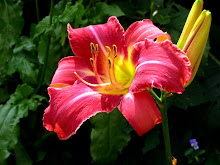
I have to confess to being one of those people who have held some romantic notions of the past, despite – or maybe because of – having portrayed early 17th century life in New Plimoth for some years. It’s so easy to think that life was more simple, straightforward, less harried and unburdened with the complexity of modern life; it can sound quite appealing. It is, perhaps, a great part of the motivation of many of us who have moved out to the country, trying to recreate to some degree a more direct and sustainable way of life.
But, of course, the reality of the past isn’t exactly what we might imagine it was. Not even close. I’ve learned this in various ways, and I’m still learning it. Right now I’m reading
Where We Lived: Discovering the Places We Once Called Home by Jack Larkin, chief historian at Old Sturbridge Village. It first appealed to me as a remarkable collection of photographs of the domestic architecture of early America, most of them taken by the Library of Congress Historic American Building Survey. But what has been even more illuminating are the many passages taken from primary sources, written by American and European travelers about the various places they visited in our country’s early years, describing what they saw and experienced.
For most Americans, from the earliest European settlements up until the twentieth century, domestic life was very different from what we know today. It was common, say, to find 8-12 people living in a 3- or 4-room house, several to a bed; privacy did not exist. Today’s average household numbers 2.6, with an average of 1200 square feet per person; back in 1800, the census records show that houses in Brookfield, Massachusetts averaged about 120 square feet per person;
one-tenth of the space we enjoy today. A household usually consisted of husband, wife, and children – as today – but often also included elderly parents, unmarried brothers and sisters, widowed daughters, orphaned grandchildren, even married children and their kids – not to mention any hired household or farm help. And that was the average; there was an astonishing amount of poverty as well, tumbledown shacks and hovels unimaginable to us today, people living in conditions we would now consider totally uninhabitable.
But what has really struck me are the descriptions of the common filth of everyday life. (To be fair, that’s not the focus of the book; there’s so, so much more to it, and I highly recommend it as a great read. But the dirty parts are what I’ve found riveting!) The vivid olfactory and visual pictures painted, of foul-smelling chamberpots in every room, unwashed bodies, “souring milk and ripening cheese,” beds “swarming with bedbugs” and heads full of lice, crowded sleeping quarters in hot, stuffy, unventilated attics (unheated and uninsulated in winter), open windows and doors offering no resistance to mosquitoes and flies, muddy yards, manure-stained boots and clothes … maybe it’s because I seem to have a more sensitive nose than most, but it’s hard to imagine. While we would allude to this at Plimoth, of course we also went to our homes each night with our hot water, showers, slept in clean beds each night and put on clean clothes in the morning; most of us weren’t noticeably stinky. The descriptions of earlier America, especially prior to 1800, portray a life that would be abhorrent to most of us today.
(I must confess, humorous thoughts immediately come to mind of modern mothers scurrying around their spotless households with a spray bottle of antibacterial cleanser, frantically trying to “protect” their offspring from Evil and Dangerous Microbes … studies are now telling us that pursuing the Holy Grail of the antiseptic home does more harm than good.)
Of course, there were the houses of the more well-to-do that were cleaner; having servants to fetch water and scrub and launder made life much more tolerable and pleasant. But that wasn’t the average American home.
Anyone who’s ever visited us here knows that we do not keep a spic-and-span household; having a farm, we regularly carry in dirt, dust, bits and pieces of vegetation and firewood on clothing and shoes and boots; three dogs and three cats contribute their share of fur and dust as well; and we are a bunch of overly-busy packrats, all manner of things collecting faster than we seem to be able to organize. We just try to keep the chaos tamped down. Even so, I can appreciate that our household is a thousand times cleaner than it would have been two hundred years ago, when this home was built by a blacksmith, water was carried from the spring, the lawn outside our door was a barnyard, and the nearest settlement of any consequence was a half-day’s ride by horseback.
And I’m really glad the bedbugs are long gone.




















































